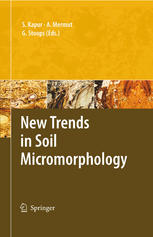

Most ebook files are in PDF format, so you can easily read them using various software such as Foxit Reader or directly on the Google Chrome browser.
Some ebook files are released by publishers in other formats such as .awz, .mobi, .epub, .fb2, etc. You may need to install specific software to read these formats on mobile/PC, such as Calibre.
Please read the tutorial at this link: https://ebookbell.com/faq
We offer FREE conversion to the popular formats you request; however, this may take some time. Therefore, right after payment, please email us, and we will try to provide the service as quickly as possible.
For some exceptional file formats or broken links (if any), please refrain from opening any disputes. Instead, email us first, and we will try to assist within a maximum of 6 hours.
EbookBell Team

4.0
46 reviewsThe soil water retention curve, the saturated hydraulic conductivity and the unsaturated hydraulic conductivity function are basic soil hydraulic functions and parameters. Ample apprehension of the soil hydraulic functions and parameters is required for a successful formulation of the principles leading to sustainable soil management, agricultural production and environmental protection. From these, all the other parameters, required in the solution of the practical tasks, are derived. The basic soil hydraulic functions are strongly dependent upon the soil porous system. The development of models is characteristic by the gradual transition from the simplest concepts up to the sophisticated approaches, which should correspond to the visual reality studied by soil micromorphology. 2 Soil Porous System and Soil Micromorphometry 2.1 An Overview on the Quantification of the Soil Porous System Quanti? cation of the soil porous system consists of classi? cation of soil pores, ch- acterization of the soil pores shapes and the estimation of the pore size distribution function. When the hydraulic functions of the soil pores are considered, the following laws of hydrostatics and hydrodynamics are applied as best ? tting to the classi? cation criteria of the size of the pores (Kutilek and Nielsen 1994, p. 20, Kutilek 2004): A. Submicroscopic pores that are so small that they preclude clusters of water molecules from forming ? uid particles or continuous water ? ow paths.